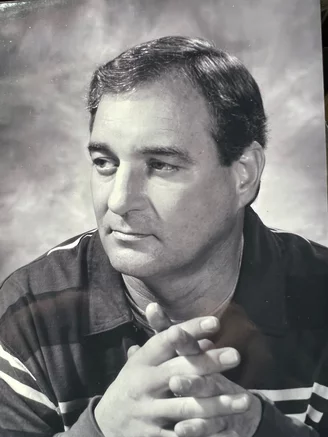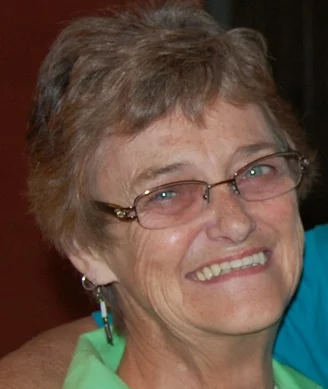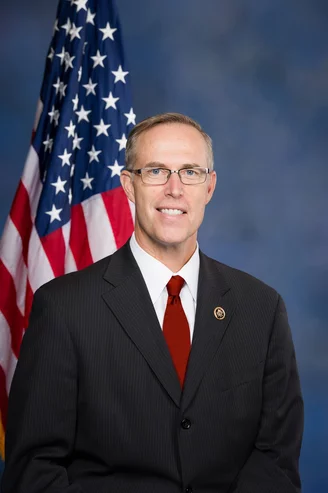OBITUARY: David Lloyd Jager, 1955-2023
LoCO Staff / Thursday, June 1, 2023 @ 6:56 a.m. / Obits
At 2 a.m. on May 17, 2023, the world lost a wonderful, talented soul. David Jager (68) died in his sleep at his home in Eureka.
David was born in Eureka in 1955. He was the fifth child of Frank and Fredia Jager. He attended St. Bernard’s school and graduated with the class of 1973. Shortly after high school and encouraged by his good friend, Father Tom Devereaux, he entered St. Mary’s Catholic seminary in Kentucky and began his studies to become a priest. After two years he returned home convinced that the priesthood was not his calling. Once back in Eureka he attended College of the Redwoods and briefly Humboldt State University. During this time he obtained his EMT certification and became a member of the Eureka Volunteer fire department.
In the late 1970s he earned his commercial truck driver’s license and began his career as a long-haul truck driver. He traveled all over the United States and had many stories to tell about the various cities he visited and adventures of driving in New York City. Dave was a certified scuba diver and enjoyed his many trips to the Gulf Coast and Florida, where during down time from driving truck he could dive in the warm waters.
During his early teen years David was a proud member of Boy Scout Troop 54. He completed several 50-mile summer hikes with the troop in the Trinity Alps and Marble Mountains.
In his youth David was an accomplished rock climber and mountaineer. He completed numerous climbs in Yosemite, the Trinity Alps, the Sierra, and the Cascade mountains of Oregon. When he was home his practice ground for climbing was old Patrick’s Point State Park (Now Sue-Meg State Park). He and his brother pioneered many of the climbing routes still used today. His climb of the Grand Teton in Wyoming was a proud moment in his climbing career.
David had Native American roots. He was a tribal member of the Citizen Band Potawatomi. His ancestry on his mother’s side was the Bird Clan of the Degraff-Navarre families.
In his retirement he operated a lawn care business to keep active until his health failed. He was a caring person and donated to many charities both on the local level and nationally.
His brothers and sisters would like to give a special thanks to Hospice of Humboldt — especially Robert, who cared for David in his final days.
David was a lifelong bachelor and was predeceased by his father, mother, and his younger brother Paul.
He is survived by his sisters and brothers: Dora Kaliamos, Patty Roberts, Dot Wentworth; Frank, Michael and Adam Jager.
A memorial service will be held later this summer.
###
The obituary above was submitted on behalf of David Jager’s loved ones. The Lost Coast Outpost runs obituaries of Humboldt County residents at no charge. See guidelines here. Email news@lostcoastoutpost.com.
BOOKED
Today: 4 felonies, 13 misdemeanors, 0 infractions
JUDGED
Humboldt County Superior Court Calendar: Yesterday
CHP REPORTS
No current incidents
ELSEWHERE
RHBB: Brass, Banners, and a Bit of Chaos: Hundreds Rally at Eureka Courthouse Today
RHBB: [UPDATE 2:53 p.m.] Medical Emergency on Northbound Highway 101 Near Fields Landing
Times-Standard : Humboldt County health insurance rates jump $182 per month
Times-Standard : Civic calendar | Eureka brings back transgender sanctuary resolution
OBITUARY: Marla Kay Smoker, 1944-2023
LoCO Staff / Thursday, June 1, 2023 @ 6:56 a.m. / Obits
Marla Kay Smoker passed away on March 7, 2023 in Eureka.
She was born on January 24, 1944 to Percy and Wiletha Munsell in Klamath Falls, Oregon. The family eventually moved to Redding, where Marla was a member of the International Order of the Rainbow for Girls, of which she was very proud. She graduated from Enterprise High School Class of 1962. She continued living in Redding while working for AAA Insurance for several years.
In 2002 she met George Smoker. She knew the day they met they were meant to be together forever. They were married on April 16, 2004 during Kool April Nights in Redding. The ceremony took place on the drive up to the second story of the Convention Center. Marla wrote their vows and their friend Gene Davenport performed the ceremony. Marla felt that Gene was taking too long and finally asked when he would say “You may now kiss the bride.”
Marla moved to Eureka with George. They owned and operated Redwood Coffee Service for 7.5 years and made many friends during that time. They belonged to Redwood Vintage Rods and traveled to many car shows and rod runs. So much fun and close friendships were made. They also enjoyed camping whether by roughing it or going in their camp trailer. Marla’s pride and joy was their vegetable garden and her beautiful flowers. She definitely had a green thumb. She also made the best applesauce from their apple tree (with George’s help).
Marla was a special person with a heart of gold and great personality. She was loved by many and will forever be in our hearts and thoughts. She was preceded in death by her parents Percy and Wiletha Munsell and her brother Forrest (Bo) Munsell. She is survived by her loving husband George Smoker of Eureka, her daughter Laura Stevens of Redding and several nieces, nephews and cousins. Her many friends and family will miss her deeply. RIP Marla, until we meet again.
A Celebration of Life will be held on Saturday, June 17, 2023 between 12 and 3 p.m. at the Loyal Order of Moose Lodge, 4328 Campton Road, Eureka, CA 95503.
###
The obituary above was submitted on behalf of Marla Smoker’s loved ones. The Lost Coast Outpost runs obituaries of Humboldt County residents at no charge. See guidelines here. Email news@lostcoastoutpost.com.
HUMBOLDT TODAY with John Kennedy O’Connor | May 31, 2023
LoCO Staff / Wednesday, May 31, 2023 @ 4:34 p.m. / Humboldt Today
Catch up quick with the LoCO’s local newscast! Press play above and check below for today’s pressing poll question.
ADDITIONAL READING:
- Missing Woman Who Prompted Nationwide Scare Found Safe in Eureka, Police Say; Allegedly Abusive Boyfriend Arrested on Outstanding Warrant
- Sheriff’s Office Seeks Public’s Help Locating Missing Loleta Woman
- Denied by Supes and a Judge, Enviro Groups Continue Fight Against Remote SoHum Weed Farm With Appeals Court Filing
Huffman’s a No on the Debt Ceiling Deal, Citing Damage to Environmental Protection and Reduced Assistance for Struggling Americans
LoCO Staff / Wednesday, May 31, 2023 @ 2:04 p.m. / D.C.
Press release from the office of Rep. Jared Huffman:
Representative Jared Huffman (D-San Rafael) released the following statement on his plan to vote against H.R. 3746, the legislative agreement to suspend the debt ceiling for 18 months in return for a host of Democratic spending and policy concessions. Specifically, the bill cuts non-defense spending while increasing defense spending; adds unnecessary hurdles for vulnerable Americans to receive vital food and financial assistance; significantly and permanently undermines NEPA, one of our most critical environmental laws; and flouts the opposition of climate activists and environmental justice groups by legislatively greenlighting the Mountain Valley Pipeline, which has a climate impact equivalent to building 26 new coal-fired power plants.
“Agreeing to a one-sided negotiation under threat of default has produced a bad deal and a terrible precedent. While Republicans’ egregious hostage-taking accomplished very little debt or deficit reduction, the temporary social service cuts they demanded fall unconscionably on vulnerable Americans who are struggling just to have food to eat. And those who characterize the environmental rollbacks in this ‘deal’ as merely procedural reforms are being disingenuous. These are permanent, substantive reductions in environmental protection that Republicans and the fossil fuel industry have been seeking for many years. Taken together with the abominable approval of the Mountain Valley Pipeline, this deal is a major step backward from the climate and environmental justice wins we delivered in the last Congress. And since Democrats got nothing on the permitting reform item we actually need (electrical transmission), Republicans will use that as leverage to demand even more environmental rollbacks in the months ahead.”
“Finally, once you normalize extreme hostage taking like this, there’s no going back. MAGA Republicans succeeded in holding America hostage under threat of default in order to extract unrelated demands, and they now have a template. Today’s deal is going to pass, but since it consists entirely of odious concessions to Republicans, it should pass with GOP votes. I will not be voting for what I view as a lousy deal and a terrible precedent.”
Among other things, the bill limits the types of projects subject to NEPA review, allows polluters to conduct their own environmental reviews, and codifies various provisions of the Trump administration’s 2020 NEPA regulations. The bill also approves the disastrous Mountain Valley Pipeline despite several permitting hurdles it still must go through.
Click here for a fact sheet on these provisions (Division C, Title III, Sections 321-324).
Earlier this month, Rep. Huffman joined a letter signed by 83 House Democrats to President Biden, Senate Majority Leader Chuck Schumer (D-N.Y.), and House Minority Leader Hakeem Jeffries (D-N.Y.) urging them to oppose inclusion of environmental rollbacks in any must-pass legislation.
In addition to these dirty energy provisions, this bill would:
take away Supplemental Nutrition Assistance Program (SNAP) and Temporary Assistance for Needy Families (TANF) away from hundreds of thousands of older adults and families;
take back approximately $30 billion of unspent COVID-19 aid that would otherwise be used for rental assistance, broadband, small business assistance, and more;
rescind $20 billion of the $80 billion that the Inflation Reduction Act allocated to the IRS to pursue rich tax evaders and provide improved customer service; and
end the student loan payment pause, requiring borrowers to begin repayment 60 days after June 30.
Gov. Newsom, Legislators May Soon End Education Grant Worth $2,500
Mikhail Zinshteyn / Wednesday, May 31, 2023 @ 12:52 p.m. / Sacramento
By Ellin Beltz, via Wikimedia. CC BY-SA 3.0, Link
###
Workers who lost their jobs during the COVID-19 pandemic and are enrolling in a college class, be warned: Your chance to get as much as $2,500 will likely be gone by June 15.
The Golden State Education and Training Grant Program was created in 2021 to help workers laid off because of the economic consequences of COVID. But now the college grant program is itself slated to be cut due to California’s current fiscal malaise.Seeking ways to plug the state’s estimated $31.5 billion budget hole, Gov. Gavin Newsom proposed in May to completely scupper the relief grant program in the 2023-24 budget year, which starts July 1. That would return an estimated $480 million to the state — nearly all of the $500 million lawmakers and Newsom allotted for the program.And while the Legislature hasn’t officially formulated its budget response to Newsom, which is due by June 15, the budget committee in the Assembly and a key subcommittee in the Senate have approved Newsom’s plan to sunset the program. About 6,000 people have used the program so far; the Legislative Analyst’s Office, a nonpartisan advisor to the Legislature, suggested getting rid of it at the end of the year.
Officials with the agency overseeing the relief grant said individuals who currently qualify for the aid can still apply, but the timeline is tight.
Eligible workers must submit the application for the grant by June 15, said Shelveen Ratnam, a spokesperson for the California Student Aid Commission, said in an email Tuesday afternoon. If workers affected by the COVID-19 pandemic aren’t currently in a college program, they must be enrolled by June 30 to take advantage of the grant, Ratnam added.The aggressive timeline applies to colleges as well — they, too, must verify a student’s enrollment by June 30.After June 30, the commission “will disburse awards to the grantees that have met all the eligible criteria,” Ratnam wrote.
Unlike typical financial aid applications, applying for the relief grant takes less than 20 minutes. But workers seeking the money must satisfy several requirements, including that they:
- lost their jobs “due to” the pandemic;
- weren’t enrolled in a higher-education program when they were laid off;
- currently earn less than $42,800 a year as single wage-earners without kids or more if their families are larger;
- make less than what they did before the pandemic;
- are enrolled at a community college, California State University or University of California academic program, plus a few other eligible training institutions.
The grant program was rolled out to great fanfare with plans of reaching 190,000 people, but so far few individuals have received aid. As of early May, the student aid commission awarded roughly 3,500 students with grants in 2022-23 and 2,600 through a pilot in 2021-22. That amounted to $24 million in grants.
The Legislative Analyst’s Office wrote in February that the relief grant was basically a solution in search of a problem. While many of the employees laid off during the pandemic worked in service and recreation-related jobs and lacked a college degree, this program came too late.
Now, “because the labor market has been very favorable for people looking for jobs, displaced workers are more likely to have the option to find other jobs rather than returning to school.”Plus, students in California are able to enroll in community college for free if their incomes are low enough — the target group of this grant — the analyst’s office wrote. State and federal financial aid can also lead to more education dollars for workers going back to school, the analyst’s report added. Still, those grants are only available for four or six years — and some workers may have used up their financial aid benefits.
Nonetheless, the analyst’s office pushed to “discontinue the Golden State Education and Training Grant program at the end of the current year and remove any remaining funding at that time.”
Other than the training grant, Newsom and lawmakers are signaling that California’s budget for public higher education will grow. The UC and Cal State systems are each expecting more than $200 million in state support for their core academic missions — increases of 5% from the previous year. Newsom and lawmakers also want to commit another $227 million for a new financial aid program mostly aimed at students from middle-class families, among other commitments, such as affordable student housing.
What’s being proposed is a “solid budget,” said Kevin McCarty, a Democratic Assemblymember from Sacramento, at a budget hearing last week. It’s “not perfect, but an A- to continue on our priorities.”
###
CalMatters.org is a nonprofit, nonpartisan media venture explaining California policies and politics.
Denied by Supes and a Judge, Enviro Groups Continue Fight Against Remote SoHum Weed Farm With Appeals Court Filing
LoCO Staff / Wednesday, May 31, 2023 @ 10:21 a.m. / Cannabis , Courts
A documented golden eagle nest site (yellow pin) is within line-of-sight of proposed cultivation areas for Rolling Meadow Ranch (shown in red). | File image created by CDFW.
###
PREVIOUSLY
- Appeal of 8.5-Acre Cannabis Project Along the Eel River Triggers Debate About Weed Grows in Remote Humboldt
- Supervisors Add Conditions But Narrowly Deny Appeal of Rolling Meadow Ranch Cannabis Project in Remote SoHum
- Environmental Groups Sue Humboldt County Over Rolling Meadow Ranch Cannabis Project Near McCann
- Environmental Groups Double-Sue Humboldt County Over Controversial SoHum Cannabis Project, Suggest Bohn May Have a Conflict of Interest
###
Press release from the Northcoast Environmental Center, Citizens for a Sustainable Humboldt and Redwood Region Audubon Society:
CITIZENS for a SUSTAINABLE HUMBOLDT (CSH), the NORTHCOAST ENVIRONMENTAL CENTER (NEC), and REDWOOD REGION AUDUBON SOCIETY (RRAS) have filed an Appeal from the Superior Court for the County of Humboldt, challenging the actions of the County of Humboldt and the Humboldt County Supervisors in approving Rolling Meadow Ranch, LLC’s application for conditional use permits that allow for an expansive commercial cannabis project in a remote location near the community of McCann.
The County consistently relied upon Staff’s desired conclusions about the project—not facts—in order to approve this project. As approved, it is an idealized, hypothetical project… with no basis in on-the-ground reality. Significant questions around the availability of appropriate PG&E power, woefully inadequate access roads (magically deemed category 4 equivalent despite their shockingly primitive state, and during winter rains, absolute non-existence), extreme impacts to hydrology and habitat, as well as dire and unacceptable response times in the event of emergency and wildfire, remain unaddressed.
This is in error of law.
CSH, NEC, and RRAS seek a court order requiring the County to rescind Project Approvals, and, if the Project is pursued, require that it adhere to the County’s regulatory requirements and performance standards, and CEQA’s more stringent Environmental Impact Review.
This out-sized, industrial scale project—a perversion of the intent of the Cannabis Ordinance and the Humboldt County General Plan—was approved by the Humboldt County Planning Commission in January of 2021. Neighbors of this egregious project brought an Appeal of this approval before the Board of Supervisors in March of 2021, only to have it denied by a 3-2 vote, despite enormous public outrage and opposition, and searing critique of Humboldt County Planning Department’s inadequate environmental impacts analysis by the local Fruitland Ridge Volunteer Fire Department (FRVVFD), and California Department of Fish and Wildlife (CDFW).
Information disclosed during this meeting—and afterwards— pointed to an extraordinary conflict of interest by Supervisor Rex Bohn, who voted against the Appeal and for the cultivation permits, and who later admitted that his son was involved in this project. This appearance of an extremely compromised ethical quagmire was never examined further, and the applicant was given the green light to proceed developing and operating year-round cultivation in sixteen 20,000 square foot greenhouses with five processing structures, requiring up to 30 employees commuting daily in extremely remote, difficult to access wildlands, sprawling along five miles of the Main Stem Eel River Canyon, with no confirmed power supply.
In April of 2021, the NEC, RRAS, and CSH brought a lawsuit against the County for this approval, contesting the inadequate environmental analysis performed by County Staff. They contended that a full Environmental Impact Analysis, the higher level of review under the California Environmental Quality Act (CEQA), was required for a project of this magnitude, in this setting. Substantial evidence in the record supported a fair argument that the project may have unanalyzed impacts… thus triggering the need for an EIR.
Looking at the bare facts of this case, any sane and reasonable person would conclude that this scandalous project, as proposed, has outrageous flaws, inconsistencies, and unanalyzed environmental impacts… but the third judge assigned to the case, Hon. Barry Goode, failed to understand these facts, applied an erroneous interpretation of the law, and ruled against the Petitioners on December 29, 2022.
This miscarriage of justice was the climax of a repeated theme experienced by Petitioners throughout; the original judge assigned to the case failed in her duty to timely read through the material and ascertain the facts of the case, and disqualified herself deep into the process, wasting time and resources. The second judge assigned to the case deferred to the County and the Applicant during the proceedings for the Motion for Preliminary Injunction… in a “kangaroo court” -style, absurdly sycophantic display of capitulation, apparently without reading any of the material in the record… while the Counsel for the Applicant and the County openly and shamelessly misrepresented the project.
These misrepresentations were a consistent tactic on behalf of the Project Applicant; even during the original Appeal hearing, the Supervisors were misled regarding very basic precepts of the law.
CEQA places the burden of environmental investigation on the lead agency and not the public. The County failed in its duty to uphold the law. Therefore, the aforementioned environmental organizations continue in their quest to see justice served, and have filed an Appeal with the State of California First Appellate District Division One Court on the grounds that:
- The project has not been properly analyzed for significant environmental impacts related to hydrology and water quality.
- Conclusions regarding the use of lignin oil for dust suppression are unsupported by the record in error of law.
- Significant environmental impacts related to power infrastructure have not been analyzed.
- The project has not been properly analyzed for significant environmental impacts related to fire risk and safety.
- The project conflicts with Humboldt County’s General Plan and SRA Fire Safe Regulations.
###
DOCUMENT: CSH, NEC and RRAS v. County of Humboldt, Humboldt County Board of Supervisors
CONVERSATIONS: Get Out on the Bay for ‘National Learn to Row Day,’ and Follow in the Footsteps of Cal Poly Humboldt’s Champions!
LoCO Staff / Wednesday, May 31, 2023 @ 8:49 a.m. / LoCO Sports!
Inspired by the Cal Poly Humboldt crew’s recent #1 showing at nationals? Well, there’s never been a more perfect time to get yourself or your kid into a shell! Saturday is “National Learn to Row Day,” and Karen Sack and Olivia McShea of the Humboldt Bay Rowing Association are here to talk about their free educational events down on the Eureka Waterfront.
Ready to get more serious? Sack and McShea also lay out the three separate two-week summer camps that the rowing association is running over the next few months. More details here. There’s also a camp for adults, which you can find here.
Get on the water! Press play on the video above to hear Sack and McShea make the case that it is a good thing for you to do.





